Regarding steak, two popular cuts often come up in conversations Delmonico and Ribeye. Both are known for their tenderness and flavor, but what sets them apart? Delmonico steak, also known as a boneless ribeye or Scotch fillet, is cut from the rib area of the beef. It’s a thick, juicy steak with a lot of marbling, making it flavorful. On the other hand, the Ribeye steak is cut from the same area, but it contains bone, making it slightly more challenging to cook. It also has a higher fat content, which makes it even more flavorful than Delmonico.
In this article, we’ll take a closer look at Delmonico Vs Ribeye and break down their differences, so you can decide which steak you want to try next time you visit your favorite steakhouse.
What is Delmonico?
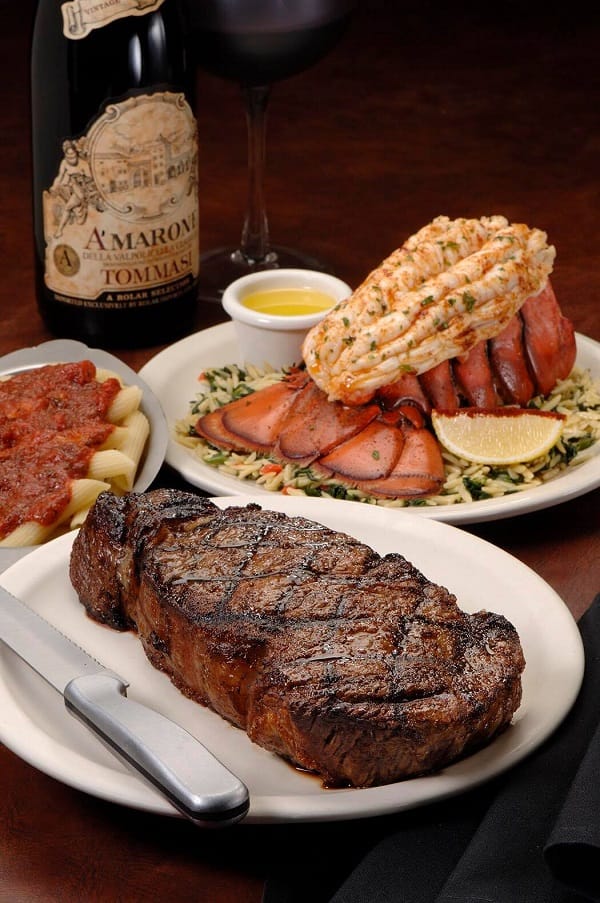
The origin of Delmonico beef can be traced back to the early 1800s when it was first served in a New York City restaurant known as Delmonico’s. The steak was named after the restaurant and was originally served with a unique butter, garlic, and parsley sauce. Since then, steak preparation has evolved, and many variations have been created.
Today, Delmonico beef can be found in many steakhouses and restaurants around the United States. It is typically cut from the rib eye or the short loin of the cow and is known for its rich flavor and juicy texture. The steak is usually cooked on a hot grill or pan and served with the traditional onion-and-butter sauce.
Delmonico beef is an excellent choice for steak connoisseurs looking for a delicious steak of high quality and flavor. The steak is perfect for grilling and can be served as an entrée or as part of a larger steak dinner.
What is Ribeye Steak?
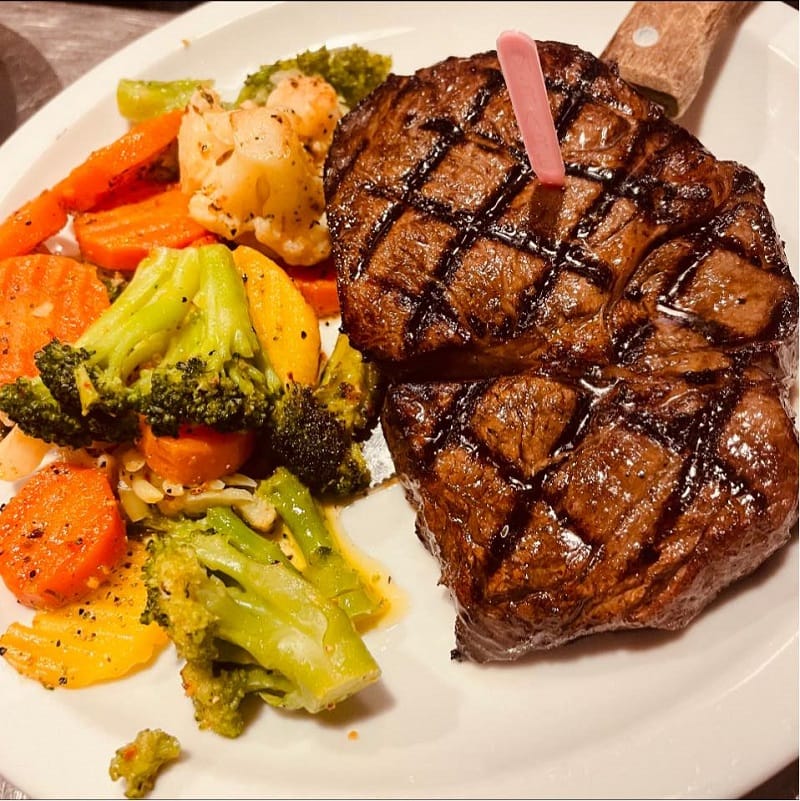
Ribeye steak is a cut taken from the animal’s rib section, usually a cow. It is one of the most popular cuts of steak and one of the most flavorful. This cut of steak is made up of a combination of the ribeye muscle and the fat surrounding it, giving it its unique flavor.
The Ribeye is a great choice for pan-searing, grilling, or broiling. It has a varied texture with a mix of tenderness and chewiness. The fat marbling helps to keep the steak moist and juicy while it cooks, and it also helps to enhance its flavor. This steak is best cooked on high heat, giving it a nice char.
The Ribeye is a great choice for a flavorful and juicy steak. It is a great protein source and has a good amount of healthy fats. The fat marbling helps to keep the steak moist and flavorful, and it also helps to add a unique flavor profile to the meat.
When purchasing a ribeye steak, looking for a cut with good marbling is important. This will ensure that you get the best flavor from your steak. You can also choose a grass-fed ribeye steak that is more nutrient-dense than grain-fed.
Similarities Between Ribeye And Delmonico Steak
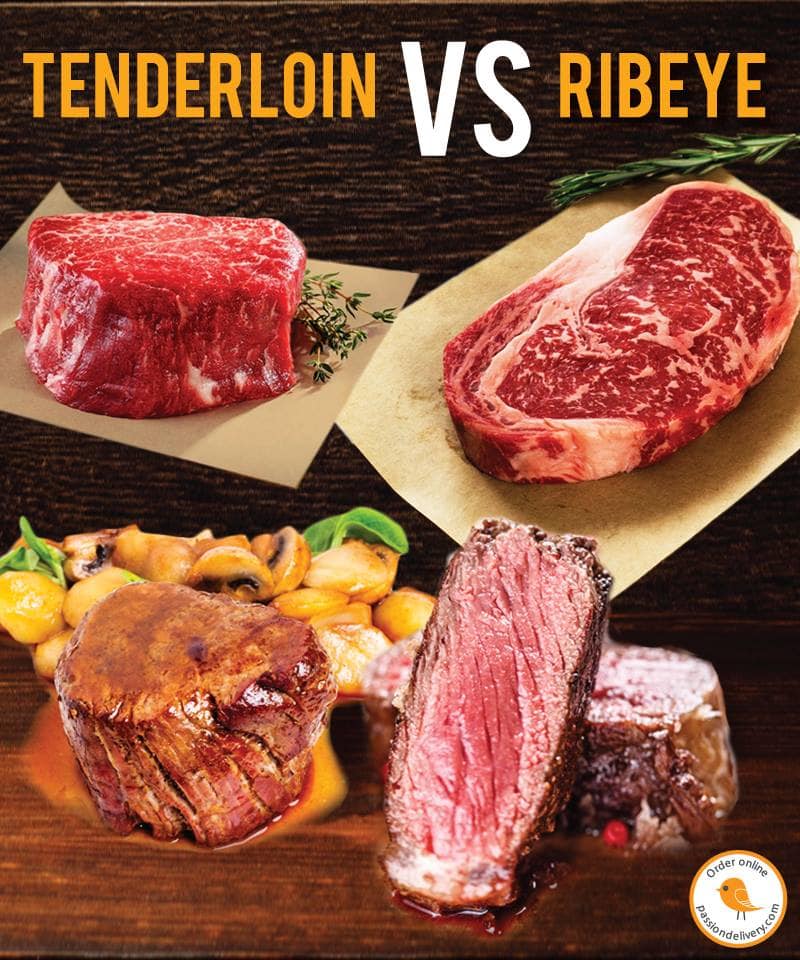
Let’s start by looking at the main similarities between ribeye and Delmonico steak. Both are cut from the same muscle group, known as “the ribeye,” located between the shoulder blade and the spine. It’s considered one of the most tender cuts of beef and is full of juicy flavor. Because of its location, ribeye steaks are typically larger than others, so you get more bang for your buck.
When it comes to taste, ribeye and Delmonico steaks are both incredibly flavorful. Both are high in fat, which gives them their delicious flavor. Ribeye steaks are often marinated or rubbed with spices to enhance their flavor before cooking. Delmonico steak is often served with a sauce or butter to help bring out its flavor.
In terms of nutrition, Ribeye and Delmonico steaks are very similar. They both contain high amounts of protein and are relatively low in fat and calories. Both steaks are also a good source of iron and other minerals.
The Difference Between Delmonico vs Ribeye Steaks
Delmonico steak is usually slightly larger and heavier than Ribeye, with a more dynamic beefy flavor. On the other hand, Ribeye steak is creamier, juicier, and more buttery in taste. Delmonico steak is cut from the short loin section of the cow, while Ribeye is taken from the rib section. Delmonico steaks can be either bone-in or boneless, and they tend to have a finer grain texture due to marbling, which gives them a tender consistency. On the other hand, the Ribeye steak is known for its robust and juicy flavor, thanks to its thicker fat cap. While Delmonico steaks are often considered more affordable than Ribeye steaks, they both offer great taste and satisfy any steak lover’s craving.
Let’s look at the differences between the two and determine which is right for you.
Size
A Delmonico steak is typically larger than a Ribeye steak, and the size difference is quite noticeable. The Delmonico steak is usually at least one inch thick, while the Ribeye steak is usually half an inch thick. So if the size is essential for you, then the Delmonico steak will provide you with more meat to enjoy.
Meat Cut
A Delmonico steak is cut from the cow’s rib section, while a Ribeye steak is cut from the loin section of the cow. The rib meat is known for being more marbled and flavorful, while the loin meat is leaner and usually more tender. So if you’re looking for a steak that is both flavorful and tender, then the Delmonico steak is probably the best choice.
Appearance
A Delmonico steak will be darker and appear more marbled than a Ribeye steak. The Ribeye steak will appear more uniform in color and texture, and it will be less marbled. So if you’re looking for a steak that looks great on the plate, the Ribeye steak will be your best choice.
Which Steak Is Heavier, Delmonico Or Ribeye?
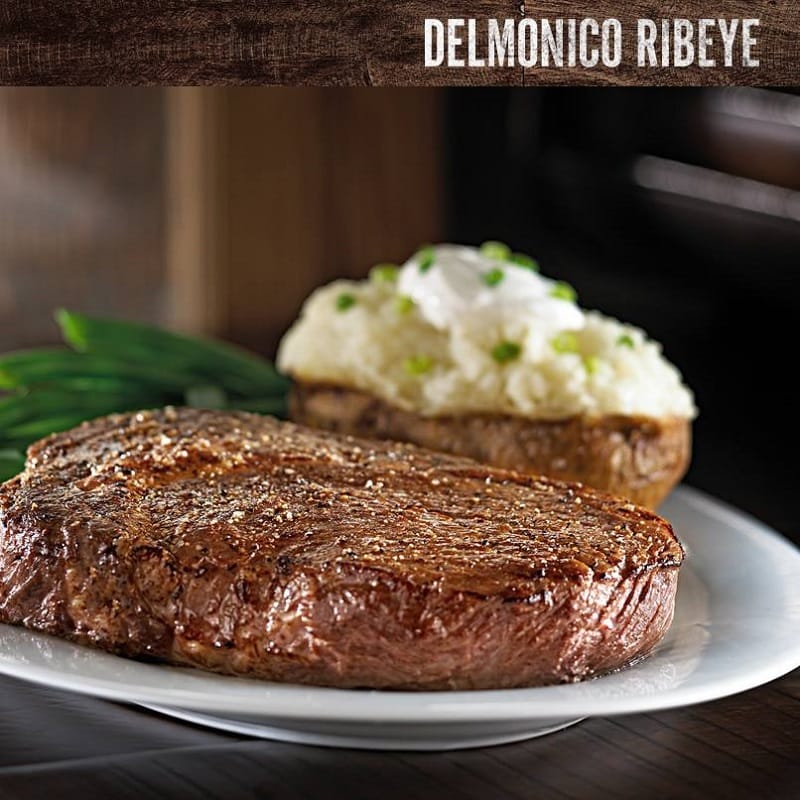
The Delmonico steak is heavier. A Delmonico steak will typically weigh in at around 12 ounces, while a Ribeye steak will weigh in at about 8 ounces. So if you’re looking for a steak that packs a hearty punch, the Delmonico steak is the way to go.
Which Cut Of Meat Is More Tender, The Delmonico Or The Ribeye?
Generally, the Delmonico is a more tender cut than the Ribeye due to its higher fat content. The Delmonico has a buttery, almost creamy texture that melts in your mouth. The Ribeye, on the other hand, is known for its juiciness and chewy texture.
What Is The Texture Difference Between A Delmonico And A Ribeye?
The Delmonico has a more tender texture, while the Ribeye has a firmer texture. The Delmonico is also more flavorful due to its higher fat content, while the Ribeye has a bolder, beefier flavor.
Taste
When it comes to taste, both steaks have their unique flavors. The Delmonico has a rich, buttery flavor, while the Ribeye is known for its juicy, beefy flavor. While some may prefer the flavor of the Delmonico, others may find that the Ribeye provides a more intense beef flavor.
Fat Content
The Delmonico contains more fat than the Ribeye, which gives it its tender texture and buttery flavor. The Ribeye, on the other hand, has a much lower fat content and is known for its lean cut and intense flavors.
Bone Content
The Delmonico steak is usually boneless, while the Ribeye steak usually has a bone. The Ribeye is cut from the rib area, so it has a bone running through the center of the steak. The Delmonico steak is cut from the loin area and is usually boneless, although some cuts may have a bone.
Which Cut Of Meat Has More Marbling, The Delmonico Or The Ribeye?
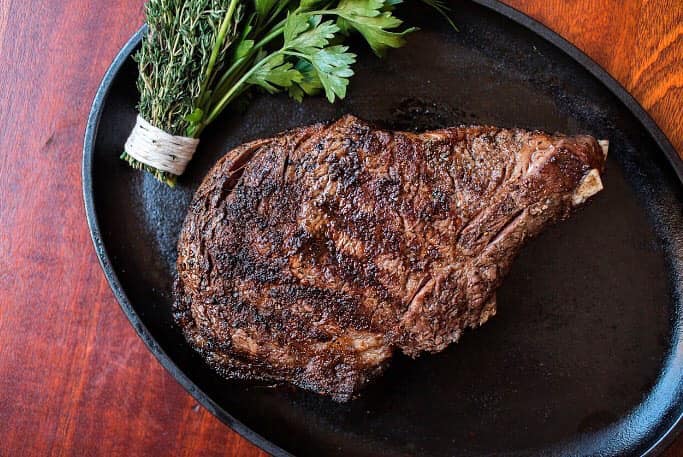
Marbling is the white flecks of fat that run through the meat. It is prized for its flavor and juiciness. The Ribeye steak has more marbling than the Delmonico steak. The Delmonico steak has some marbling but is not as pronounced as the Ribeye.
Which Cut Of Meat Is Better For Grilling, The Delmonico Or The Ribeye?
Both cuts of steak can be successfully grilled, but the Ribeye is generally considered the better grilling choice. The Ribeye steak has more marbling, which helps it retain moisture and flavors during grilling. The Delmonico steak is leaner and may not retain as much moisture and flavor during grilling.
Delmonico Vs Ribeye: Cost
The cost of the Delmonico steak is usually slightly less than that of the Ribeye steak. The Ribeye steak tends to be more expensive because it has more marbling and is usually a boneless cut. The Delmonico steak is usually less expensive because it is usually a boneless cut.
Read more:
What Makes Delmonico Steaks More Dynamic In Flavor Compared To Ribeyes?
The defining factor that makes Delmonico steaks more dynamic in flavor compared to ribeyes is the marbling of fat. Marbling is the streaks of fat visible in the steak’s muscle. Delmonico steaks have more marbling which infuses the steak with flavor and helps it stay juicy. This is why Delmonico steaks tend to be a bit more expensive than ribeyes.
Another factor that contributes to the unique flavor of Delmonico steaks is the age of the steak. Delmonico steaks are aged for a longer period of time, and this has a huge impact on their flavor. This aging process breaks down the muscle fibers and helps to tenderize the steak. This results in a tender, juicy steak with a deep, complex flavor.
In addition to the marbling and aging, Delmonico steaks are known for having a thicker cut. This allows them to retain more juice and fat even when cooked to medium-rare or medium doneness. Ribeyes are usually cut thinner and tend to dry out when cooked beyond medium rare.
Finally, Delmonico steaks are known for having a more intense, beefy flavor due to the fact that they are usually cut from the ribeye area of the cow. Ribeyes are usually cut from the loin area, which results in a milder, more subtle flavor.
Why Are Ribeyes Commonly Considered The Most Popular Steak?
First and foremost, ribeyes are incredibly tender. The marbling, or fat, that’s present throughout the steak helps to keep the steak juicy and tender. This makes the Ribeye an excellent choice for those who like their steak cooked medium-rare or medium.
Second, ribeyes are relatively easy to cook. You can get a perfect ribeye every time if you have a good cast-iron skillet and high heat. This makes them perfect for amateur cooks and experienced chefs alike.
Third, ribeyes are often considered one of the most affordable steaks. Ribeyes are usually less expensive than other steaks, such as the Delmonico steak. This makes them perfect for feeding large groups or hosting a steak night on a budget.
Finally, ribeyes offer a great combination of flavor and texture. The delicious flavor of the steak is enhanced by the fat marbling, while the texture is perfect for those who prefer a juicy and tender steak.
Is There A Particular Thickness Ideal For A Delmonico Or Ribeye Steak?
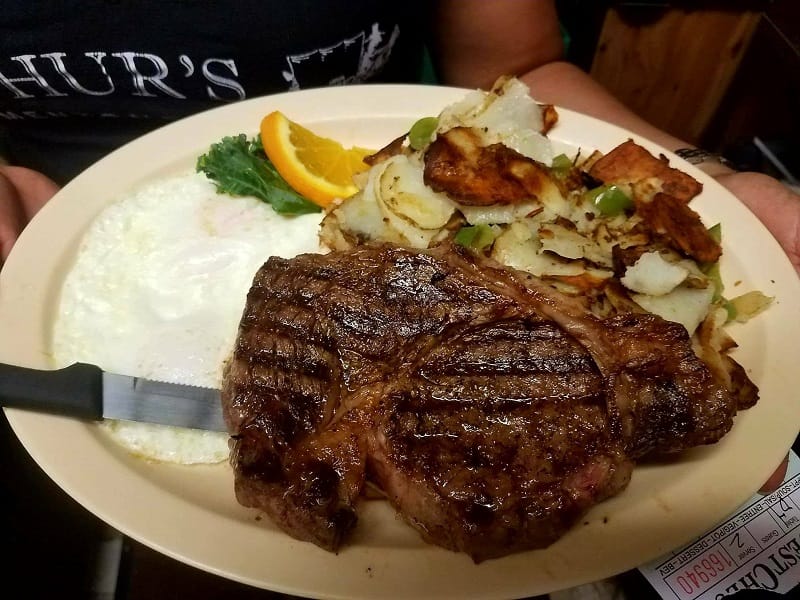
The answer to this question is both yes and no. While there is no definitive answer to this question, some general guidelines can help you decide what thickness is optimal for a Delmonico or Ribeye steak.
First, let’s start with the Delmonico steak. Delmonico steaks are typically cut between 1-1.5 inches thick and are usually bone-in. This thickness is ideal for this cut of steak because it allows the steak to remain juicy while still providing a powerful flavor.
Next, let’s discuss the Ribeye steak. Ribeye steaks are often cut between 1.25-2 inches thick and are usually boneless. This thickness is ideal for a Ribeye steak as it allows for more intramuscular fat, better heat distribution, and a juicier steak overall.
When deciding on the ideal thickness for a Delmonico or Ribeye steak, it’s essential to remember that the thicker the steak, the longer it will take to cook. For best results, it’s recommended that you cook your steak to an internal temperature of 140-145 degrees Fahrenheit for medium-rare. You can increase the temperature to 155-160 degrees Fahrenheit if you prefer a more well-done steak.
In conclusion, there is no definitive answer to the question of what is the ideal thickness for a Delmonico or Ribeye steak. However, by keeping in mind the general guidelines outlined above, you should be able to decide which thickness will provide you with the most delicious steak experience.
Delmonico Vs Ribeye – FAQs
Can You Cook A Delmonico Or Ribeye Steak On A Grill?
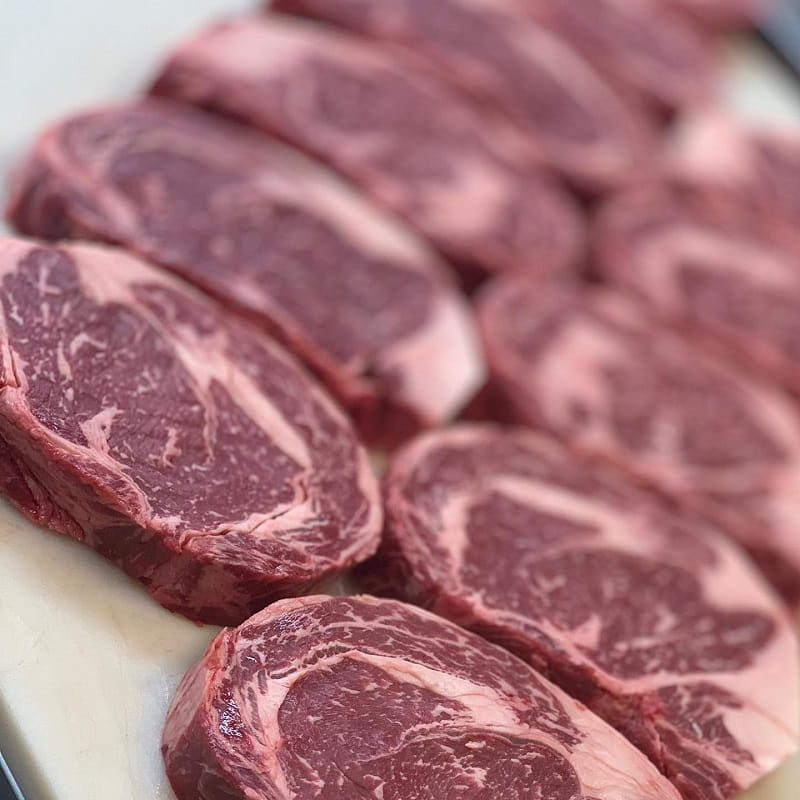
According to factual data, preheating the grill to high heat for at least 10 minutes and then cooking the steak for about 10 minutes on medium to medium-low heat will yield a hot, slightly pink steak in the center and firm to the touch. For a medium-rare steak, the meat should be cooked on the hot side of the grill for two minutes on each side. Once it’s turned over, let it cook for two more minutes. The steak should then rest for a few minutes before being served. Cooking a Delmonico or ribeye steak on the grill is an excellent way to impress guests and enjoy a delicious meal.
What Seasonings Or Marinades Complement The Flavor Of A Delmonico Or Ribeye Steak?
If you’re looking to bring out the best flavors in a Delmonico or ribeye steak, then there are a few seasonings and marinades you should consider. A simple combination of oil, Worcestershire sauce, soy sauce, steak seasoning, steak sauce, salt, pepper, and rosemary can be blended in a food processor to create a delicious marinade.
Alternatively, you can try a mixture of BBQ sauce, red wine vinegar, hot sauce, garlic, and other spices. For a dry rub, a mix of salt, pepper, cumin, and coriander can pack a punch of flavor. Another option is to add soy sauce, brown sugar, pineapple juice, garlic, and apple cider vinegar to a small pot for a tangy twist.
Conclusion
No matter which steak you choose, Delmonico vs Ribeye, you can be sure you’ll taste the best. You can’t go wrong with either, whether it’s for a special occasion or just an ordinary night at home. So, go ahead and make your choice, and get ready for an unforgettable steak dinner. Bon appetite!
References:
- https://www.allrecipes.com/recipe/68301/grilled-delmonico-steaks/
- https://www.crowdcow.com/steaks/new-york-strip
- https://www.foodnetwork.com/how-to/packages/food-network-essentials/what-is-the-best-cut-of-steak

Hey readers! Chip Holland here, and I’m a Manager of this website. My passion for writing about it only matches my passion for BBQ. Follow my blog for mouth-watering recipes, tips, and tricks for the perfect smoke, grill, and BBQ. I’m sure you won’t be disappointed!
